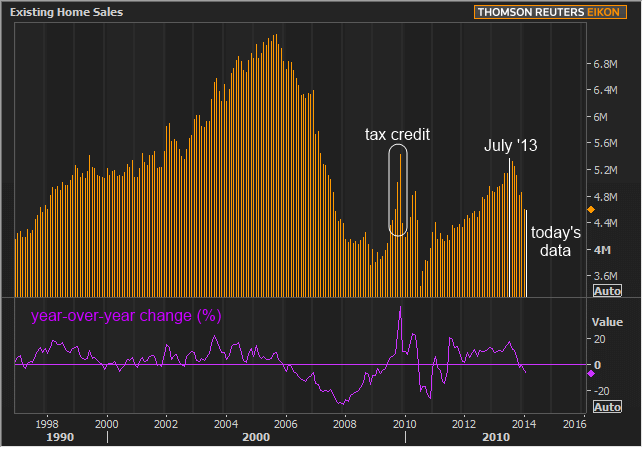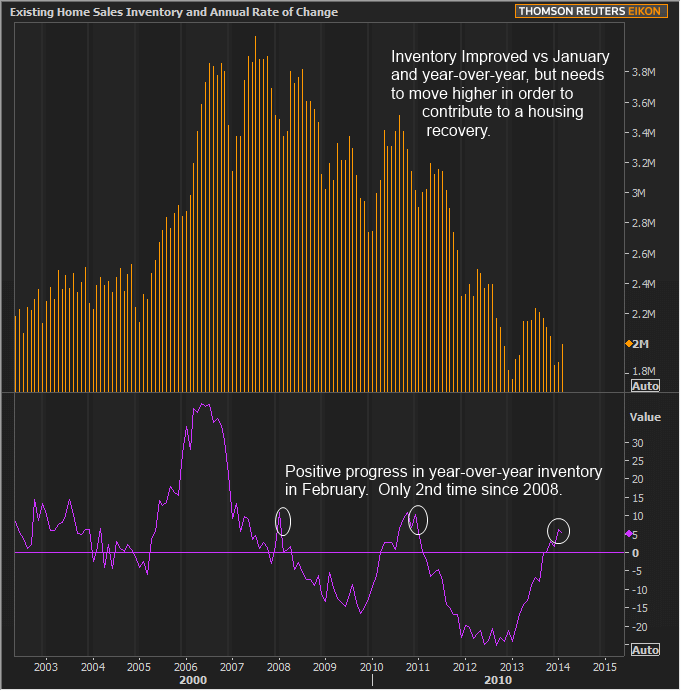Existing Home Sales, which are completed transactions for single-family homes, townhomes, condominiums and co-ops, continued trending lower in February, falling to their lowest level since July 2012 according the the National Association of Realtors (NAR). Compared to last month's reading of a 4.62 mln annual pace in January, today's 4.60 mln is essentially unchanged.
While that is in line with the median forecast among economists surveyed by Thomson Reuters, it contributes to a downtrend beginning after the post-crisis highs in July 2013 when sales stood at a 5.38mln annual pace (note: November 2009 was slightly higher at 5.44mln, but can't truly be considered 'post-crisis' as it was the last month to benefit from the homebuyer tax credit. Case in point: sales fell to 4.4 mln in the following month).

The trend could improve as the year progresses, according to Lawrence Yun, NAR's chief economist. “We had ongoing unusual weather disruptions across much of the country last month, with the continuing frictions of constrained inventory, restrictive mortgage lending standards and housing affordability less favorable than a year ago,” he said. “Some transactions are simply being delayed, so there should be some improvement in the months ahead. With an expected pickup in job creation, home sales should trend up modestly over the course of the year.”
Even within today's data, there are a few bright spots. Prices have been trending higher for more than 2 years and experienced a very normal month-over-month change from January. March prices are almost always higher compared to February, and improvements tend to stick around until August before prices ebb into the Fall months.
The inventory situation improved as well, rising 6.5 percent to 2.0 million existing homes. At the current pace of sales, that's a 5.2-month supply, up from 4.9 percent in January. Ostensibly a strong improvement, such jumps are the norm for the February data. The positive implication is that last February's inventory stood at 1.9 mln units, making this the first February to show a year-over-year gain since 2011. Before that it was 2008.

In addition to inventory and tough guidelines, NAR President Steve Brown noted the troublesome impact of student loan debt. “20 percent of buyers under the age of 33, the prime group of first-time buyers, delayed their purchase because of outstanding debt," Brown said. "In our recent consumer survey, 56 percent of younger buyers who took longer to save for a downpayment identified student debt as the biggest obstacle.”
All-cash sales made up 35 percent of the market in February, a 2 percent increase from January, and a statistic that remains historically elevated. That's not purely driven by large companies gobbling up rentals though. Individual investors bought 21 percent of February's homes, with 73 percent of them paying all cash. The major caveat here is that Existing Sales can only account for transactions happening through MLS.







